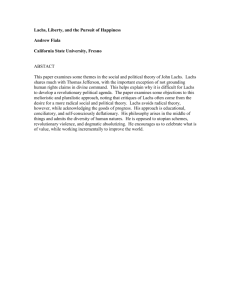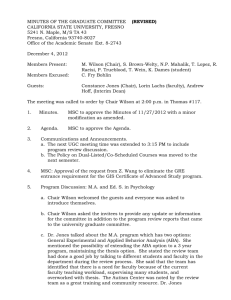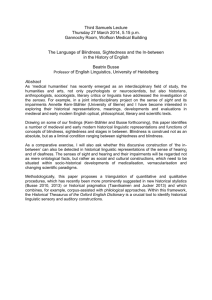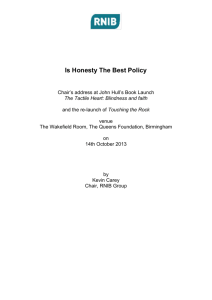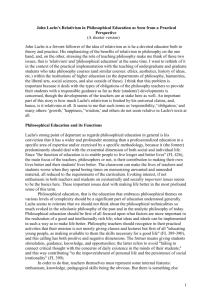Two Conditions of Human Blindness (And a Hope for Better Sight
advertisement
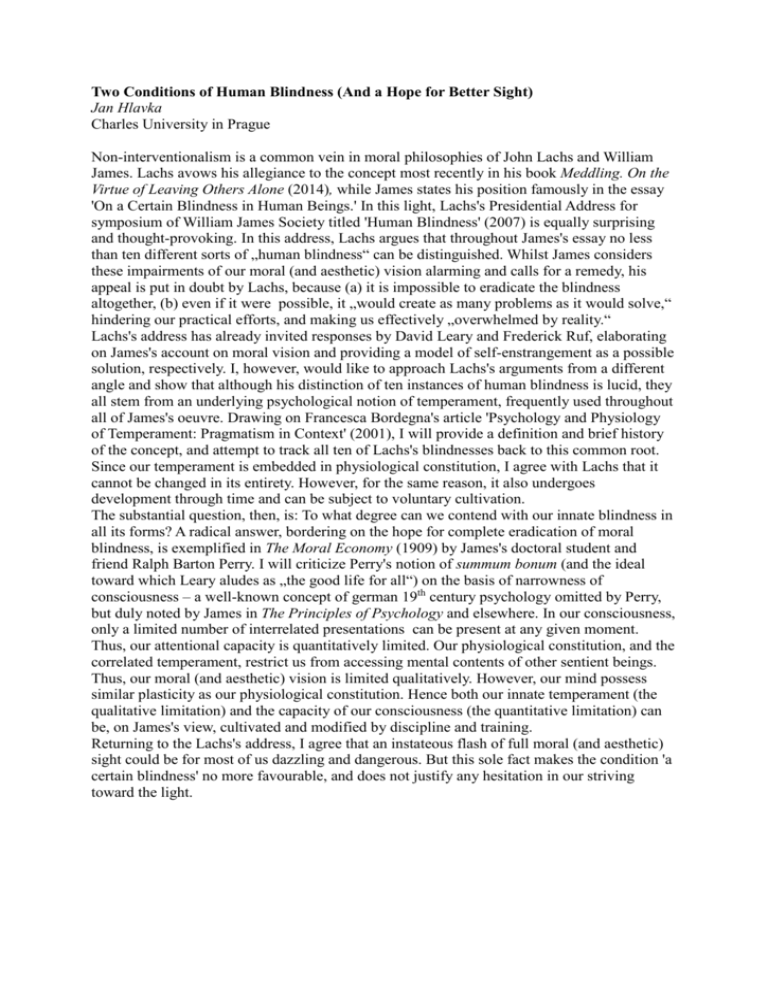
Two Conditions of Human Blindness (And a Hope for Better Sight) Jan Hlavka Charles University in Prague Non-interventionalism is a common vein in moral philosophies of John Lachs and William James. Lachs avows his allegiance to the concept most recently in his book Meddling. On the Virtue of Leaving Others Alone (2014), while James states his position famously in the essay 'On a Certain Blindness in Human Beings.' In this light, Lachs's Presidential Address for symposium of William James Society titled 'Human Blindness' (2007) is equally surprising and thought-provoking. In this address, Lachs argues that throughout James's essay no less than ten different sorts of „human blindness“ can be distinguished. Whilst James considers these impairments of our moral (and aesthetic) vision alarming and calls for a remedy, his appeal is put in doubt by Lachs, because (a) it is impossible to eradicate the blindness altogether, (b) even if it were possible, it „would create as many problems as it would solve,“ hindering our practical efforts, and making us effectively „overwhelmed by reality.“ Lachs's address has already invited responses by David Leary and Frederick Ruf, elaborating on James's account on moral vision and providing a model of self-enstrangement as a possible solution, respectively. I, however, would like to approach Lachs's arguments from a different angle and show that although his distinction of ten instances of human blindness is lucid, they all stem from an underlying psychological notion of temperament, frequently used throughout all of James's oeuvre. Drawing on Francesca Bordegna's article 'Psychology and Physiology of Temperament: Pragmatism in Context' (2001), I will provide a definition and brief history of the concept, and attempt to track all ten of Lachs's blindnesses back to this common root. Since our temperament is embedded in physiological constitution, I agree with Lachs that it cannot be changed in its entirety. However, for the same reason, it also undergoes development through time and can be subject to voluntary cultivation. The substantial question, then, is: To what degree can we contend with our innate blindness in all its forms? A radical answer, bordering on the hope for complete eradication of moral blindness, is exemplified in The Moral Economy (1909) by James's doctoral student and friend Ralph Barton Perry. I will criticize Perry's notion of summum bonum (and the ideal toward which Leary aludes as „the good life for all“) on the basis of narrowness of consciousness – a well-known concept of german 19th century psychology omitted by Perry, but duly noted by James in The Principles of Psychology and elsewhere. In our consciousness, only a limited number of interrelated presentations can be present at any given moment. Thus, our attentional capacity is quantitatively limited. Our physiological constitution, and the correlated temperament, restrict us from accessing mental contents of other sentient beings. Thus, our moral (and aesthetic) vision is limited qualitatively. However, our mind possess similar plasticity as our physiological constitution. Hence both our innate temperament (the qualitative limitation) and the capacity of our consciousness (the quantitative limitation) can be, on James's view, cultivated and modified by discipline and training. Returning to the Lachs's address, I agree that an instateous flash of full moral (and aesthetic) sight could be for most of us dazzling and dangerous. But this sole fact makes the condition 'a certain blindness' no more favourable, and does not justify any hesitation in our striving toward the light.
